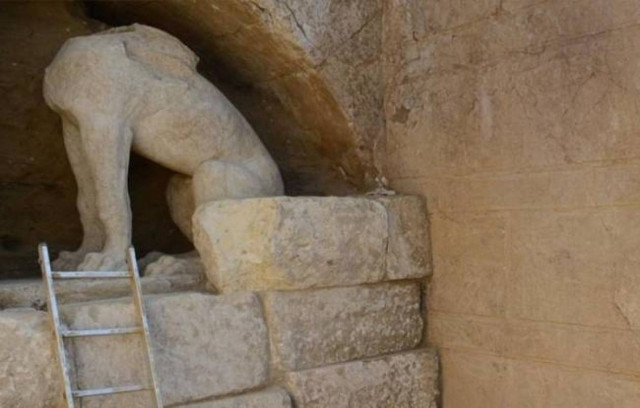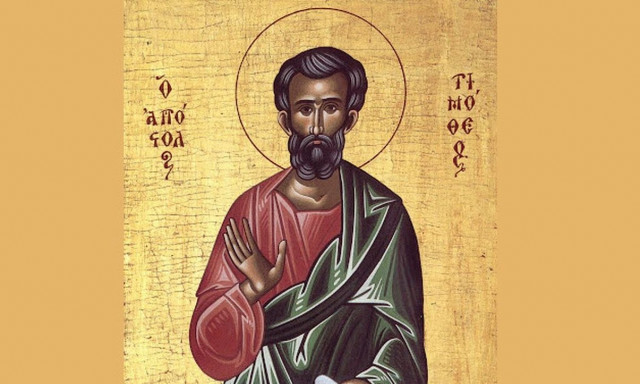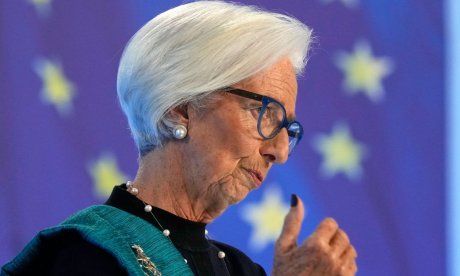Amphipolis: The Sphinx is engraved on ancient coins
The big secrets of the area, according to a numismatic expert - The myths and the enormous importance of the city "Nine Streets"

While the excavations at Amphipolis are underway and global attention is focused in the town ... of the Nine Streets, as it was called in ancient times, new evidence shed light on the archaeological finds in the area.
The Sphinxes of Ancient Amphipolis seems to be engraved on tetradrachms of 14.40 and 12.90 grams, on dyovolos of 1.40 grams and on a coin of 1/8 of a stater of 1.20 grams (according to the archaic measurement), as says the numismatist and researcher Asterios Tsintsifos.
According to him, "this ancient coin, came into view, first in the Ancient Amphipolis, in the late 6th century BC".
Mr Tsintsifos spoke to ANA - MPA and unfolded the history of the region, when the town of Nine Streets, later Amphipolis, enjoyed great fame in ancient times, because of the position he held, as it was commercial focal point and bordered by the large commercial port of Amphipolis.
The multinational city and the glory
As the numismatist reveals, "the "Nine Streets" was literally a multinational city. From the 7th century, there were Halkidians settlers. The largest colony was of the Milesians, who brought coinage in the locals. This is obvious by the use of the Milesian system of weights. There were even smaller colonies of Phocaean, Samian and Eritreans from Ionia. Since 520 BC the Visaltis element with the Macedonian, which already existed in Visaltia, become very strong, in the city.
Finally, there were also settlers from Andros and Akanthos. After the Persian campaigns and the final withdrawal of the Persians in 479 BC, began a countdown, which eventually led Nine Roads in the hands of the Athenians and renamed to Amphipolis", explains Mr. Tsinsifos analyzing the monetary history of the area and role of the Sphinx on the coins.
The myths behind the story
"The Nine Streets, as evidenced by the coins, was the seat of the king of Hedoni, Geta. The Myths of Dionysus, the Hedonis and King Lycurgus, who hovered over the Pangaeum, emanated from the Nine Roads, which was the center of the cult of Dionysus. Here deified the Sphinx, which as indicated by historical data preceding the twelve Olympian Gods. After the 6th century, was worshiped in a few public areas.
The legend for the Sphinx may have been born in Thebes of Oedipus, but at least according to the coins there was no connection with the Sphinx of Thebes of the 5th BC century onwards. The public areas of its worship, known so far, is Chios, as evidenced by all the monetary production, Naxos, as demonstrated by the statue of the Sphinx which its inhabitants sent to Delphi and the city of Gergi Troy, in Asia Minor, where also all monetary production based on the Sphinx. The cult of the Sphinx was closely connected with the Dionysian cult and the wine. Thus, in Thebes, we find Dionysus, the amphora for wine and grapes as a symbol.
In Naxos, we also find Dionysus and utensils for wine grapes and so on. The obvious point of worship of the Sphinx is Amphipolis, since the era that her name was Nine Streets. The two sphinxes at the monument of the Kasta hill are not a surprise, because the ancient monetary theme of the city was the Sphinx. The Greek sphinx was a monetary theme of the Nine Streets. The Sphinx therefore seems to have special significance for the people of Amphipolis, since even when they changed themes in their currency, the sphinx remained on them, as a symbol.
In 530 BC, in a rise of mintage in Pangaeum, the residents of Nine Streets choose the sphinx and the cow alone or with calf, as themes for their currencies. The engravings in the currencies indicated the deity worshiped as followers of Dionysus, and their main occupation which was livestock. As shown much later, residents of Amphipolis, do not forget their roots and still use the Sphinx as a symbol. The main evidence for the identification of the Nine Streets with the sphinx comes from the decoding of the reverse side of the coins.
On the one side of the silver coins that have been found dating from 520 BC until 470 BC, there is the Sphinx, while the back side of the coin shows the source of the coin, in this case the Nine Roads. In five currency units we can see the Sphinx, while five others had the cow as the main theme. It should be noted that the coins with the Sphinx were not unknown, but due to failure of identification are characterized to date as unasserted coins from Thrace-Macedonia. Since 520 BC, that we have monetary proof of the Nine Streets, up to 357 BC, the Sphinx was present in Amphipolis.
The only time that Amphipolis was monetary absent, was the period of occupation of the Athenians (438-422 BC). In 438 BC, Agnon the settler had founded Amphipolis in place of the Nine Streets, The Golden Age of Athens, was at its peak. By then, half of the mines of Paggaio worked for the Athenians. After the founding of Amphipolis, all Paggaio was theirs. The money flowed and Agnon was one of the managers of the Paggaio.
Agnon is a less known historical figure, who established a town named 'Agnoneia', very near to Amphipolis, for show off, which was manifested through building activity. Thucydides makes reference to 'Agnoneian buildings', which have been destroyed furiously by the citizens after the release of the Amphipolis in 422 B.C. After the end of the Peloponnesian War in 404 BC, Amphipolis will experience great economic prosperity. In tetradrachms, which were made by the citizens of Amphipolis, they used symbols important to them. Within these was the Sphinx, which referred to the Nine Roads, the trestle which referred to the oracle of Dionysus, the grape, wheat, bee, etc."
According to the numismatist Asterios Tsintsifos "the final appearance of the Sphinx in the currencies will cease after the seizure of Amphipolis by Macedonians in 357 BC. This is obvious from the dozens of coins of Alexander the Great later, where neither one has Sphinx as its symbol. In contrast, most of the other symbols of Amphipolis (torch, tripod, bee, dolphin, etc.) transferred to tetradrachms of Alexander."
The coins have already been sold
However, according to Mr Tsintsifos, some of ancient silver coins, depicting the Sphinx and brought the identity of the Nine Streets, were sold in major auction houses of Europe. An undetermined drachma silver coin weighing 14.40 grams, sold in Germany, in Lanz auction house in Munich on November 28, 2005, for 3600 Euros and an undetermined drachma silver coin weighing 12.90 grams, sold on September 22, 2011, in Munich, in the auction house Hirsch, for 4000 Euros.
At the same time, as says the numismatist Asterios Tsintsifos, verified Amphipolis tetradrachms silver coins dating from 390 BC until 360 BC, where we find the latest views of the Sphinx as a symbol in thumbnail next to Apollo, are sold: a 14.40 grams was sold in the auction house Leu in Zurich on May 16, 2001, for 390,000 Swiss francs, while the second verified tetradrachm, 14.43 grams was auctioned on January 4, 2011, in New York, by the auction house CNG, in the price of $ 700,000.
























